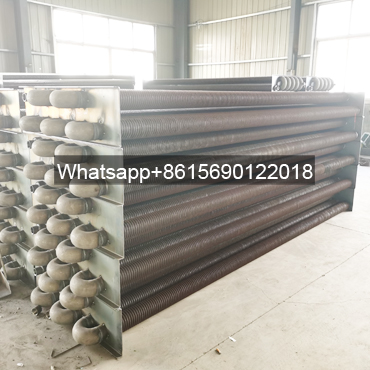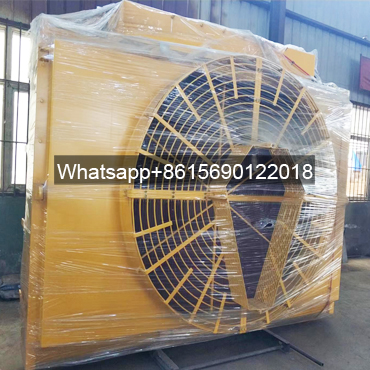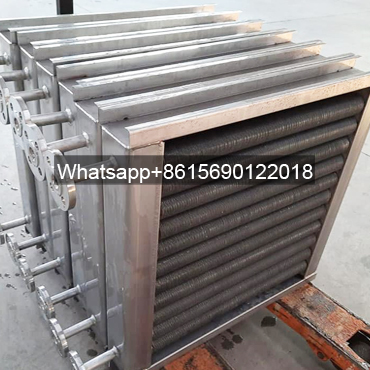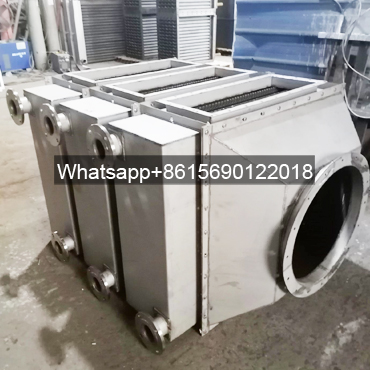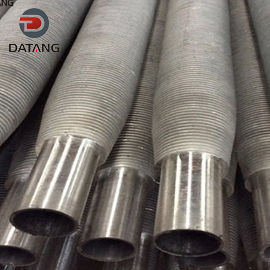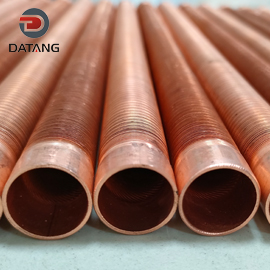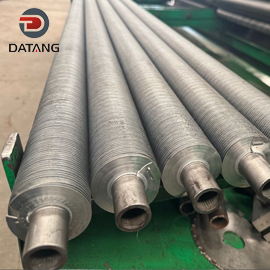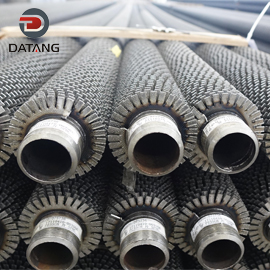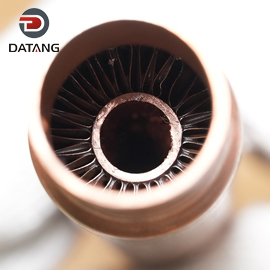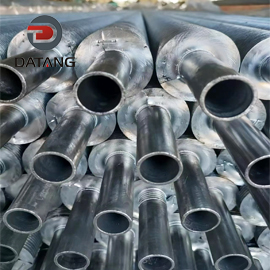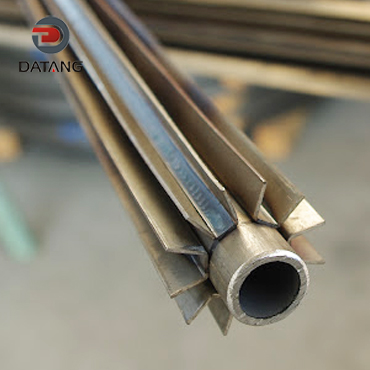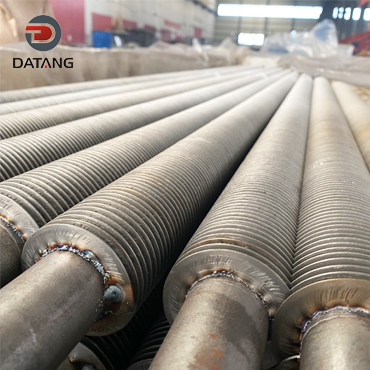Finned Tube Heat Exchanger Manufacturer and Supplier
What is a finned tube heat exchanger?
A finned tube heat exchanger, commonly known as a heat exchange device, is a type of heat exchanger used for low-temperature, high-pressure applications. It is one of the earliest and most successful discoveries in improving tubular heat exchange. This method remains the most widely used of all methods for enhancing heat transfer on tubular heat exchange surfaces.
Finned tube heat exchangers are primarily used for industrial heat exchange, typically for heat exchange. They are constructed from multiple welded finned tubes. They are widely used not only in single-finned tube heat exchangers but also in power generation, chemical engineering, petrochemical engineering, air conditioning, and refrigeration engineering.
A finned tube heat exchanger is a device that achieves efficient heat exchange by expanding the heat transfer area. Its core component is the finned tube, and it is widely used in HVAC, petrochemicals, energy, and power generation. Compared to traditional bare tube heat exchangers, it can improve heat transfer efficiency by 3-10 times within the same volume, making it a key device in modern industrial and residential thermal management systems.
Basic Structure and Classification
The core structure of a finned tube heat exchanger consists of three parts: the finned tube bundle, the shell/frame, and the fluid inlet and outlet:
The finned tube bundle: Consists of multiple finned tubes arranged in a specific pattern (such as sequential or staggered), and is the core heat exchange area. The finned tubes significantly increase the heat transfer area by combining the base tubes and fins.
The shell/frame: Depending on the application scenario, it can be classified as a tubular shell (for liquid-to-liquid heat exchange) or an open frame (for air-to-fluid heat exchange). It secures the tube bundle and guides the fluid flow.
Fluid inlet and outlet: These are typically equipped with flanges or connectors to connect the hot and cold fluid lines, ensuring that the fluids flow along the designed path within the heat exchanger.
Operating Principle and Heat Transfer Enhancement Mechanism of Finned Tube Heat Exchangers
The operating principle of a finned tube heat exchanger is based on inter-wall heat transfer: hot and cold fluids flow between the tube walls and the fins without direct contact. Its core mechanisms for heat transfer enhancement include:
Expanded Area: The fins are bonded to the base tube through processes such as high-frequency welding and winding, increasing the heat transfer area per unit length by several times and increasing the number of heat exchange contact points.
Disturbed Flow: The fin arrangement (such as spiral fins or longitudinal fins) disrupts the fluid boundary layer and reduces thermal resistance. For example, staggered finned tubes can generate vortices in the fluid, increasing turbulence.
Material Matching: The base tube and fins are made of high-thermal conductivity materials (such as copper, aluminum, and stainless steel), and corrosion-resistant materials are selected based on the characteristics of the medium (such as aluminized fins for flue gas environments).
Finned Tube Heat Exchanger Material
Carbon steel finned tube heat exchanger uses carbon steel finned tubes (ASTM A179, ASTM 192 Fin Tube)
Feature high thermal conductivity (approximately 100-120 W/(m·K)) and excellent corrosion resistance.
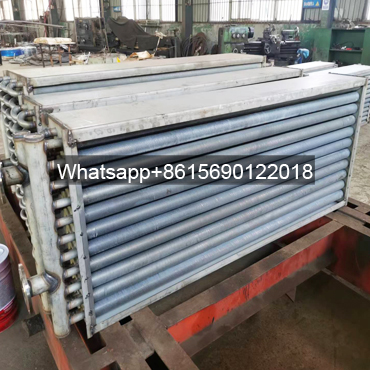
Feature high thermal conductivity (approximately 180-200 W/(m·K)) and are lightweight.
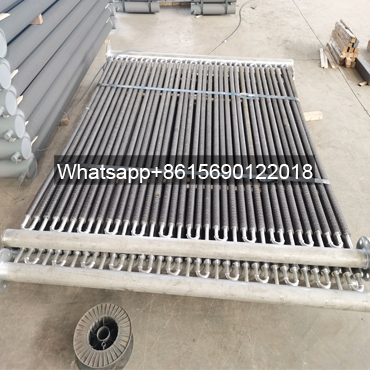
Stainless steel (such as 304 and 316L) offers excellent corrosion resistance.
Fin Tube Heat Exchanger By Medium
Based on the heat exchange medium, they can be divided into three categories:
Gas-to-liquid heat exchangers: Examples include air conditioning condensers (refrigerant-to-air heat exchange) and boiler air preheaters (flue gas-to-air heat exchange).
Liquid-to-liquid heat exchangers: Used for heat exchange between oil and water in industrial cooling systems.
Gas-to-gas heat exchangers: Examples include flue gas heat exchangers in waste heat recovery systems, which transfer heat between high-temperature flue gas and low-temperature air.
Air conditioning condensers (refrigerant-to-air heat exchange)
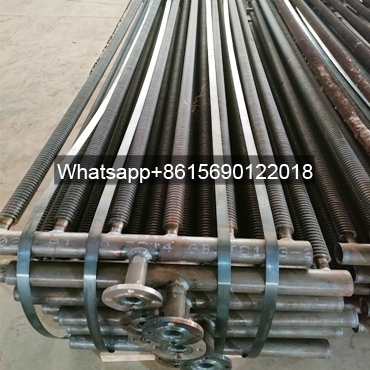
Used for heat exchange between oil and water in industrial cooling systems
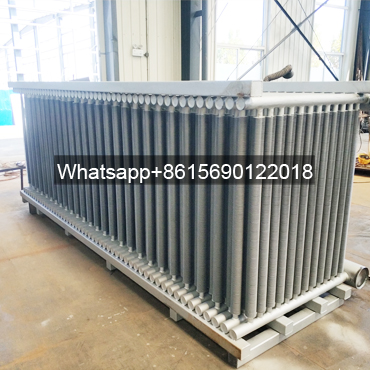
Flue gas heat exchanger in waste heat recovery systems, transferring heat between high-temperature flue gas and low-temperature air
Finned Tube Heat Exchanger Water Pressure Test
Finned tube heat exchangerwater pressure test uses water as the medium. Water is injected into the equipment and pressurized to test the equipment’s sealing and pressure-bearing capacity.
Pressure testing is crucial for the safe operation of air coolers. It allows for the timely identification and resolution of equipment problems, such as leaky seals and insufficient pressure-bearing capacity. Failure to identify and address these issues can lead to equipment failures and even accidents. Therefore, pressure testing is not only a test of equipment performance but also a safeguard for industrial safety.
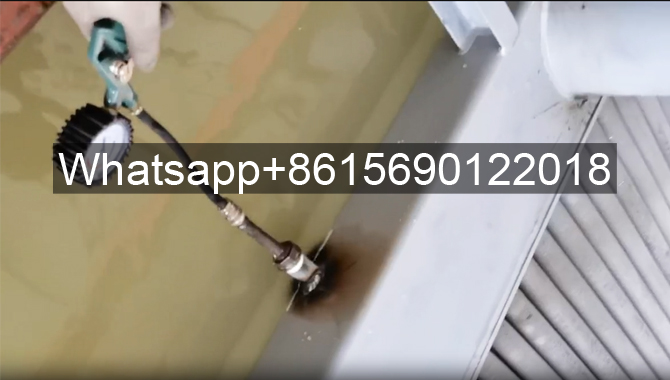
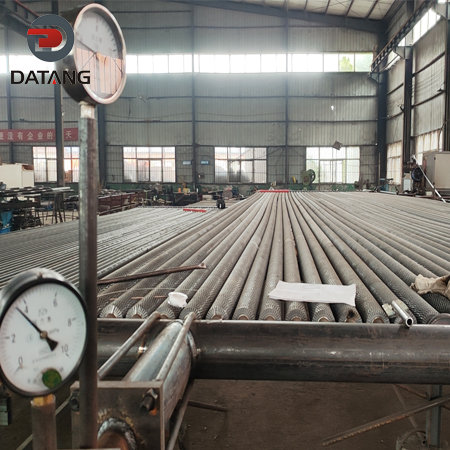
Finned Tube Heat Exchanger Air Pressure Test
An air pressure test on finned tube heat exchanger uses gas as the medium. Pressure testing tests equipment performance by applying pressure. Strictly following operating procedures ensures the safety and reliability of the process and results.
Pressure testing is essential after equipment installation or maintenance. It helps verify the equipment’s sealing and pressure-bearing capacity, ensuring that safety incidents such as leaks or ruptures do not occur during operation.
Nondestructive Magnetic Particle Testing of Finned tube heat exchanger
Nondestructive magnetic particle inspection of air coolers uses magnetic particles as a detection medium to observe defects in finned tube heat exchangers.
Magnetic particle inspection has a sensitivity that can detect discontinuities as narrow as 0.1μm. By combining multiple magnetization methods, magnetic particle inspection is virtually unaffected by workpiece size and geometry, and can detect defects in all directions.
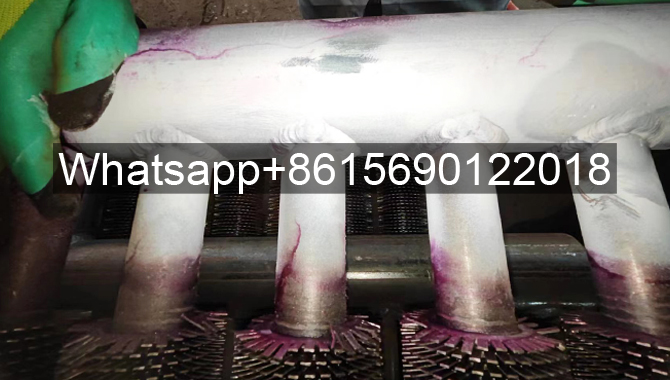
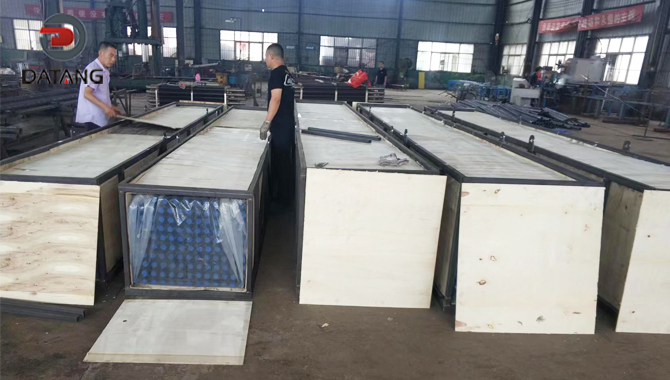
Finned Tube Heat Exchanger Package
Payment Terms:T/T, LC
Delivery: 15-30 days after payment
Marking: Standard + Steel Grade + Size + Heat No + Lot No
Package: Iron frame packing boxes and the desiccants are put into each package for continental transportation as well. or as required
Finned Tube Heat Exchanger Application
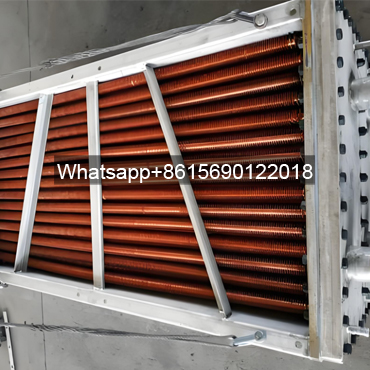
HVAC: In residential air conditioner evaporators and commercial central air conditioning units, finned tubes achieve efficient heat exchange between refrigerant and air, reducing equipment size and improving the energy efficiency ratio (COP).
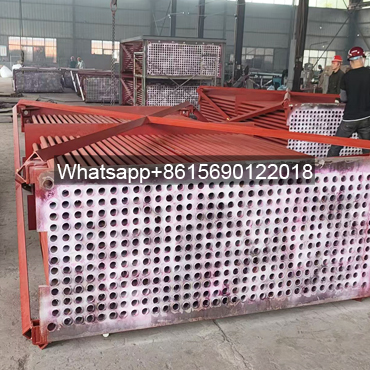
Energy and Power: Air preheaters at the tail end of thermal power plant boilers use waste heat from flue gases to heat combustion air, reducing fuel consumption. Photovoltaic power plant cooling systems use finned tubes to dissipate heat from solar panels into the air.
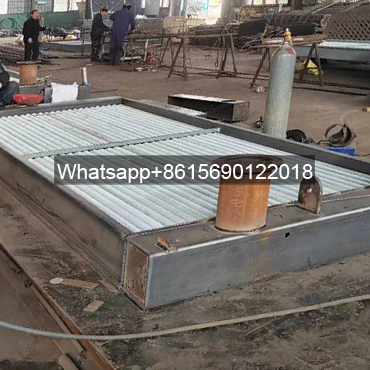
Petrochemical: In processes such as crude oil heating and solvent condensation, finned tube heat exchangers can accommodate high-viscosity, corrosive media, ensuring production continuity.
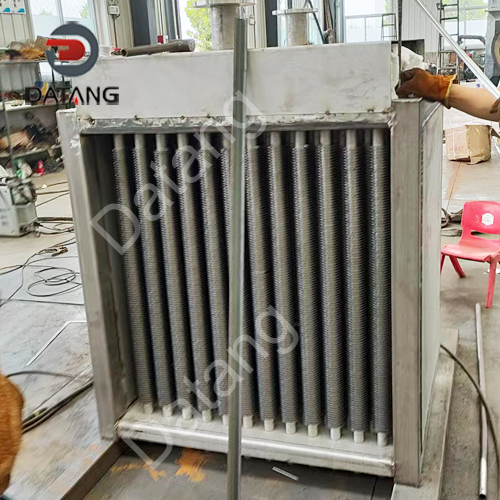
Environmental Protection: Flue gas heat exchangers in waste incineration plants can recover waste heat for heating, while also lowering exhaust gas temperatures and reducing thermal pollution.
Related Product
Air Cooled Heat Exchanger FAQs
A: The finned tube heat exchanger can be customized. We can produce it according to your drawings, and we can sign a confidentiality agreement for your patented products. For more information, please contact us.
A: Always a pre-production sample,before mass production;always final inspection before shipment.
Inspection & Guarantee Certificate is supplied with shipment, and the Third Party Inspection is available.
A: One year after shipping.
A: We have workshop can supply all parts of the finned tube heat exchanger, and 90% of spare parts can be distributed to any
place in the world within one week!
A: We can arrange for experienced engineers to provide online video guidance on product installation and train your staff on equipment operation and maintenance.
A: We have many professional and technical personnel, more competitive prices and better after-dales service than other companies.
A: Datang has high frequency resistance welding finned tube production line 18, extruded finned tube equipment 30, laser welding finned tube production line 2, wound finned tube production line 12. The annual capacity can reach 100,000 tons, the specification φ 18-273mm finned tube, according to the customer requirements of the standard production, service has exceeded 3000+ enterprises.



